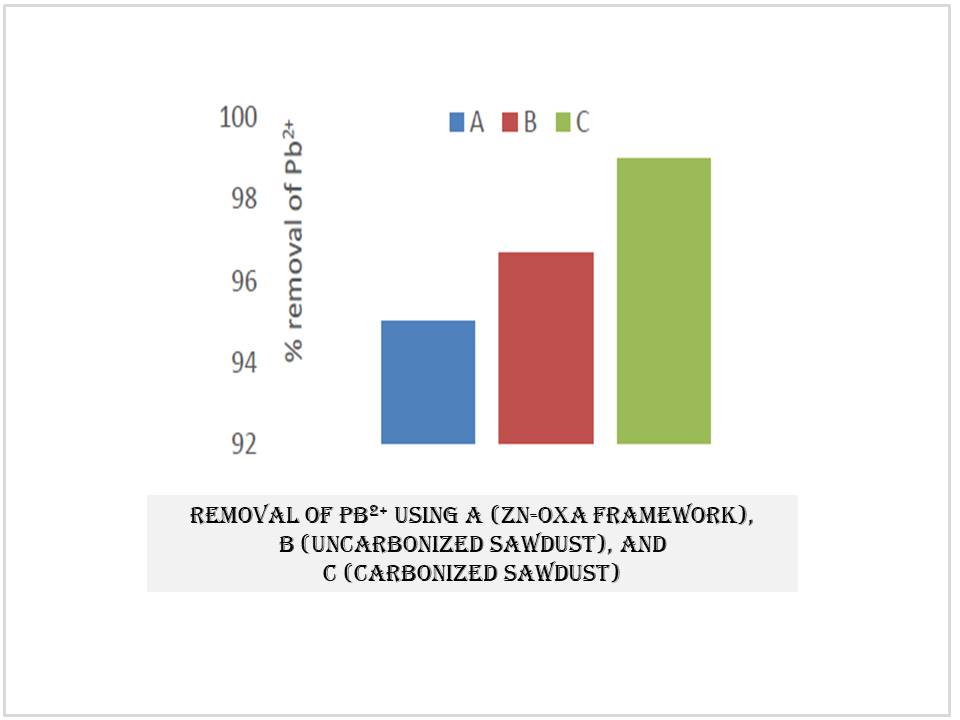Chemical Science & Engineering Research
Title
Facile Comparison of Adsorption of Pb2+ from aqueous solution using Gmelina sawdust and Zinc-Oxalic acid (Zn-OXA) Framework
Authors
Kaana Asemave
Department of Chemistry, Benue State University, Makurdi – Nigeria.
*Corresponding author E-mail address: kasemave@gmail.com
Article History
Publication details: Received: 11th March 2022; Revised: 11th May 2022; Accepted: 11th May 2022; Published: 24th May 2022
Cite this article
Asemave K. Facile Comparison of Adsorption of Pb2+ from aqueous solution using Gmelina sawdust and Zinc-Oxalic acid (Zn-OXA) Framework. Chem. Sci. Eng. Res., 2022, 4(10), 1-4.

Abstract
This work is aimed at the comparison of sorption of Pb2+ from aqueous solution using Gmelina sawdust and Zn-Oxalic acid (Zn-OXA) framework. Gmelina sawdust biosorbent was prepared by carbonization and subsequently activated; whereas, the Zn-OXA framework sorbent was prepared using slow evaporation method. These materials were characterised using FTIR. The analysis revealed principally the presence of COOH, C=O, CHO, C(O)-O-C and most likely amine functional groups in the biomaterials. The decrement in the FTIR absorption value of O-H and C = O of oxalic acid as observed in the Zn-OXA framework clearly implied that oxalic acid bonded to the Zn2+ ion via O - H and C= O functional groups. It was observed that the removal of Pb2+ by these adsorbents is: Zn-OXA framework (95%) < un carbonised sawdust (96.67%) < carbonized sawdust (99%). The multifunctionalities and may be higher porosity for the sawdust biosorbent is likely the reason it has performed better than Zn-OXA framework in terms of the Pb2+ adsorption. However, both the sawdust product and Zn-OXA framework are effective in the sorption of the Pb2+ from aqueous solution.
Keywords
Metal Organic Framework (MOF); Sawdust; Sorbent; Adsorption